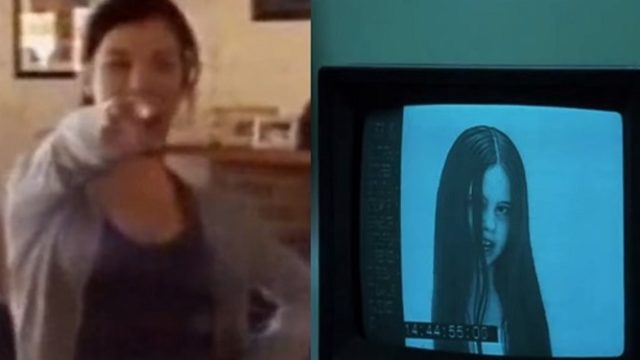Note: This article contains massive spoilers for and summaries of The Ring and Lake Mungo, along with Joyce Carol Oates’ story “Night-Side.”
There’s a story you may have heard of. A person, likely a young woman, dies under strange and maybe suspicious circumstances, and her death is not properly mourned. So her spirit does not lie still. It moves through the world of the living, haunting and harassing, until her death is acknowledged and perhaps avenged, and her bones put to proper rest. It’s an old story, told in many ways. But these days, ghosts have new ways to contact the living. What is a video of a dead person if not a message from beyond the grave?
The deadly video in The Ring only briefly shows the dead person who made it — Samara, the girl whose vengeful ghost stalks through the movie, is briefly shown disappearing in a mirror, another lens capturing an image. The video’s footage is jokingly referred to (by a soon-to-be victim) as student film material and perhaps it is, ominous images of death and the uncanny edited together. Portentous shots of ladders and centipedes butt up against genuinely creepy ones of dead horses and maddened eyes (that last a direct reference to the movie’s origins as a remake of Hideo Nakata’s film Ringu, itself an adaptation of Koji Suzuki’s novel). The video itself does not kill but to watch it is to seal your fate, with death arriving in seven days and leaving the victim a horrific corpse disfigured by a fatal fright. Director Gore Verbinski shows us flashes of these victims and they are terrifying. This is an awful death that any sane person would try to avoid.
But the video also offers clues to its making and perhaps a way to escape Samara’s wrath — by slowing and tweaking the footage, analyzing fleeting bits of information, investigative reporter Rachel (a plucky Naomi Watts) starts piecing together the tragic history of the girl at its center. One clue leads to another and more images are discovered, like photos of those dead horses from an old newspaper article. And further footage of Samara herself, taken from an asylum. Instead of vanishing into a mirror, she’s pitilessly visible under bright fluorescent lights, pacing in a cell and stared at by the camera while an unseen interlocutor drills questions toward this eight-year-old child.
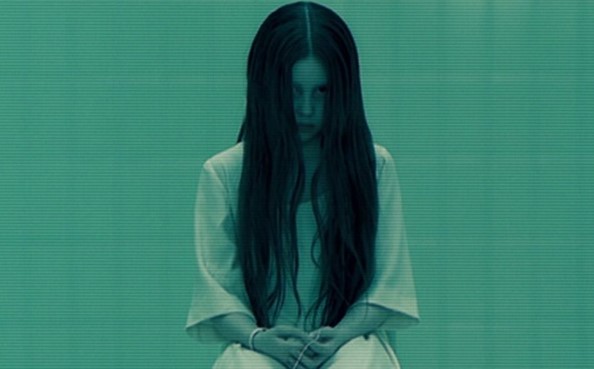
Verbinski and cinematographer Bojan Bazelli film their share of shocks, but most of the movie is patient persistence drawn in muted tones, the grim grey-blue of a CBS crime procedural (although Bazelli fills this dreary palette with depth as opposed to TV’s weightless world). This is a bit of a swerve for Verbinski, who loves intricate setpieces and is a master at constructing them, from Mouse Hunt to Rango to the Pirates of the Caribbean movies. But that procedural tone and style places Rachel’s investigation of the supernatural squarely in the real world, right down to the mundanity of fast-forwarding and rewinding a VHS tape, making each step into the uncanny feel uncomfortably plausible. And it conceals the real complicated construction here.
The Ring was adapted by Ehren Kruger (apparently with uncredited help from Scott Frank) and Kruger is a guy who’s bounced around Hollywood over the years, most recently working on blockbusters like the Top Gun sequel and the Transformers franchise. But he first made a splash with Arlington Road, and The Ring is the second of three movies (with The Skeleton Key a few years later completing this unofficial trilogy) to rely on a “twist” ending that is based on the protagonist being fooled. Not just being fooled, but being convinced that they have understood the story they are in and taking an action they believe will save themselves but will actually damn them, just like their antagonists planned the whole time. This can lead to some pretty out-there contrivances in Arlington Road that fall apart on any consideration afterwards, but the reversal of the ending in the moment is what matters. Skeleton Key, like The Ring, is a ghost story playing with skepticism and belief, so its manipulations feel more organic — instead of Arlington Road’s need for every connection and false coincidence to align because it fits the antagonists’ plan, the malevolence in Skeleton Key has the supernatural on its side.
As does The Ring, and even so Kruger generally plays fair, giving clues if not outright statements to Samara’s evil intentions but putting them in the mouths of unsympathetic figures, in particular a creepy and weary Brian Cox. He and other grim adults talk about a child who was evil from the start; it’s easier and less cruel to believe in the story Samara’s images are telling. That fits a narrative of innocence lost and a wrong that can be recognized if not righted. The Ring’s reveal shows that the bulk of the movie has been irrelevant in some way — Watts inadvertently saved herself a while ago and all of her pursuit of Samara’s history had nothing to do with it — but that is part of the horror. Kruger and Verbinski’s Ring mirrors the movie Samara made, a collection of disturbing and heart-tugging images that the viewer thinks can be corralled into a meaning they can comprehend, and the makers of these movies — real and fictional alike — want to take your comprehension and shatter it.
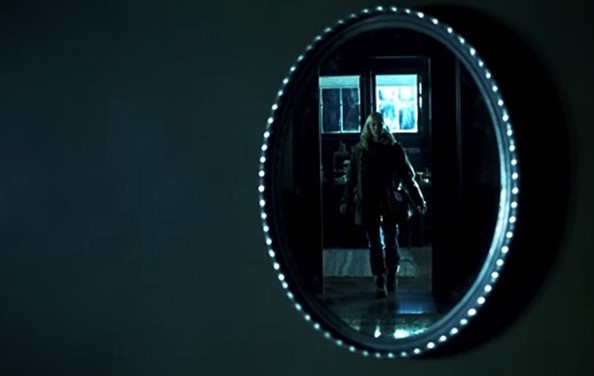
The Ring inverts the viewer’s comprehension; Lake Mungo continually undermines it, raising interpretations only to to recontextualize them. It is structured as a documentary, it would be possible to go in cold and think it is entirely real in the way that thousands of people once believed in the visions and reports of the early 20th Century spiritualists – blurry photos of those would-be mediums run under the opening credits. Those psychic conduits said they could connect with another world and some people at the time even had images proving it. Writer-director Joel Anderson is working in a much trickier mode here, but like Verbinski he downplays his visual elements, mostly shooting straightforward interviews of subjects talking to a person off-camera and establishing shots.He uses a cast almost entirely of unknowns who improvised through a mostly dialogue-free script. The Ring still has heavy hitters like Watts and Cox, everyone here feels like a person living in the rural Australia of the film’s setting.
The one actor here with a significant mainstream resume is Talia Zucker, and she only appears in footage within the movie itself, like home videos of her goofing around with her family and friends. Zucker plays Alice Palmer, a 15-year-old who has drowned while swimming at a dam while her family was on a trip, devastating her mother and father and brother. They had noticed her acting strangely in the months leading up to her death and there is no explanation for the drowning — one minute she was there and the next she was gone. But a month later, she might be back.
The family feels a presence in the house and tells the documentarian (played, offscreen, by Anderson himself) about seeing Alice — her father is confronted while he mourns in her room; her mother awakes to see Alice motionless at the foot of the bed. It’s enough to make her mother think she could still be out there and that another girl’s corpse had been pulled from the water. Anderson briefly shows a medical examiner’s photo of the body Alice’s father had to identify and it’s true, it is bloated and decayed, it could and could not be her. An image that tells a story compelling enough to exhume Alice’s grave, just to be sure. And it is her. She is dead. But while all this has been going on, her brother Matthew, a photographer and visual artist, has set up cameras around the house to run during the night, and they have captured images of something moving, something staring out of reflections. Trying to spot these before they are revealed is irresistible and Anderson’s technique of providing the space to do so before slowly zooming in is consistently creepy. Then a local couple filming themselves by the dam catches another image in the background of their blurry and boring home movie, one that looks a lot like Alice.
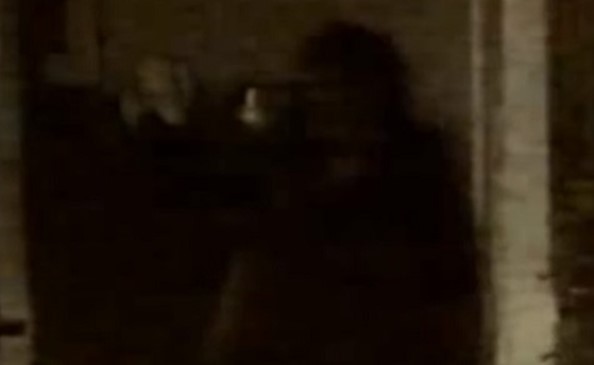
Like Kruger and Verbinski, Anderson structures his film around images of and connected to a dead girl, but he is even more withholding in his ultimate design. A documentary will often conceal and reveal information the filmmakers know in order to reflect the understanding of the movie’s subjects at the time. Anderson’s film starts out as a documentary crew looking back at how potentially supernatural images and happenings affected the Palmers and their community over the course of a few months – a story of inexplicable events that happened in the past – but more information comes to light during this filming and that affects the movie’s story. If The Ring slowly constructs a narrative out of its images, leading the viewer from confusion to a certainty that is then upended, Lake Mungo undercuts and twists away from comprehension, destabilizing the viewer slowly instead of through The Ring’s reversal.
The Palmer family hires a psychic to make contact with Alice, and his quiet consolations feel sincere and thus questionable — isn’t this how a scammer would operate? But the phoniness instead comes from an unexpected yet obvious source, after another home movie taken by yet another couple at the dam shows the mysterious figure previously caught on tape is clearly a disguised Matthew. He faked his own videos and photos, out of desire to help his mother process her own grief but clearly as a way of dealing with the loss himself. It’s an update of the faked supernatural images of the past; but even after his disgrace Matthew keeps watching his tapes and a close watch shows that he accidentally caught another image. And this one, of their next door neighbor breaking into Alice’s room and looking for something, is very real.
That something turns out to be a sex tape of the neighbor and his wife and Alice, a perverse and extremely illegal relationship (the neighbors quickly flee the town) that was clearly a factor in Alice acting strangely and being disturbed. And we find out just how disturbed when the psychic confesses that Alice had come to him months before her death, describing fears of drowning and dying and dreams that echo the visitations her parents reported earlier. “I feel like something bad is going to happen to me. I feel like something bad has happened to me, it hasn’t reached me yet but it’s on its way. And it’s getting closer,” she tells the psychic. And one of Alice’s friends comes forward with a cell phone video of his own, showing Alice on a school trip burying something by a tree at Lake Mungo, the site of the oldest known human remains in Australia. Alice came back from that trip without her cell phone, and her family heads to Lake Mungo hoping to find it.
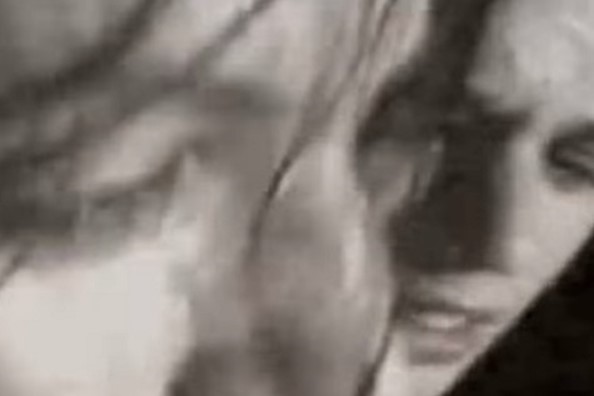
Lake Mungo’s images are not easily grasped. What appears to be filmed evidence of a ghost is faked; the interactions between Alice and her family appear to be instances of temporal alignment that denies physical or emotional connection. In The Ring, the images Rachel watches and discovers are markers on a path that eventually leads her to an abandoned and covered-up well, a tomb where Samara’s mother dropped her still-alive body. One of the eerier images of Samara’s video is a ring, which turns out to be light shining through the cover of the well and presumably the last image she saw in that awful place, and the discovery of her body suggests a closed circle. Rachel does not die after seven days — the time Samara spent in the well — and believes this frees her son Aidan and ex-partner Noah, who both watched the video as well. Samara can sleep in peace. But when she tells this to Aidan, who has been communicating with Samara for much of the movie, he is aghast. “You weren’t supposed to help her,” he says. “Don’t you understand, Rachel? She never sleeps.”
And then Verbinski finally drops the hammer, after nearly two hours of allusion — seven days are up for Noah and Samara comes for him. Her video’s last shot is the well, standing silent and empty at a distance from the camera; as Noah works in his apartment his TV snaps on and shows the final shot, but then an arm extrudes and Samara slowly climbs out. She slowly walks toward the camera, closer and closer, before pushing through the screen and out into the world, unstoppably tracking the terrified Noah. Verbinski doesn’t have the incredible wrongness of Ringu‘s ghost (performed by a kabuki actor who was filmed walking backwards; the film itself was then played in reverse), instead he uses digital effects to breach Samara into the world, moving her in staticky flickers that emphasize her otherness even as she is hideously present. As a horror setpiece, it cashes the checks the movie has been writing the whole time — you can believe in being frightened to death, not just by what is seen but by what is in the last moment known. Samara’s emergence in this sequence suggests another image, Jean-Léon Gérôme’s painting Truth Coming Out Of Her Well, where a woman halfway out of a cistern pins the viewer with a glare of fury. Rachel — and likely us viewers — believed Samara’s lies, here is the truth. The form of a girl piercing the veil separating the viewer from the screen, an image of inexorable death.
Alice’s family finds her cell phone where it was buried at Lake Mungo, and on it is yet another video. Lake Mungo the film was made in 2008 and its images are revealed through tape and digital screens that don’t have the clear definition of those in 2023 — Matthew’s photos are on the higher end of quality, the various home movies can be grainy or a bit blurry but are generally clear, though made by unsteady hands. Alice’s phone video is pixelated, an outback night of black blocks and blobs. But a small white spot appears as Alice walks away from her group, her camera pointed into the dark. The spot grows larger, not quickly but not slowly either, it is something shambling closer. And it finally comes into focus as the same image shown earlier in the movie of Alice’s body, pale and bruised and dead, but somehow present here and now, a doppelganger that is identified as it fills the screen and the video cuts out. It is a jump scare in the most basic execution but like The Ring’s big setpiece its true shock is recognition, not surprise. This has been coming all along. The form of a girl piercing the veil separating the viewer from the screen, an image of inexorable death.
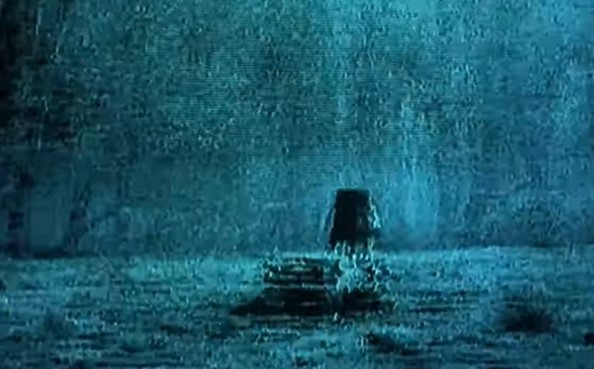
In Joyce Carol Oates’ short story “Night-Side,” two Harvard professors investigate a local woman who claims to be a medium, able to give voice to the dead. They are skeptical until one professor’s former colleague (and it is strongly implied lover) manifests, his words coming through the medium’s mouth and crying out for connection after 20 years lost in a purgatorial “universe of strangers” on the other side. “You don’t dare turn away from me!” the dead man beseeches his friend, who is horrified and heartbroken and unable to do anything. The formerly scornful professor becomes wholeheartedly convinced in the existence of life after death – “There is no death!” he insists – and harangues his fellows at the university in increasingly unhinged rants until suddenly dying a month later. His fellow skeptical investigator is shaken by this and tries to move past this brush with the supernatural, but dreams of his colleague wandering in his own endless emptiness, “mind broken and blown about” and forgetting all that he once lived for and through. The spirit sees the dreamer and demands recognition: “You don’t dare deny me! … You remember me, don’t you?”
Oates’ narrator wakes in fright but, confronted with the horror of death and what waits there, throws himself into swimming, activity, the physical world, banishing the nightmare and the pleas of the ghost in it as the story ends. At the end of The Ring, Rachel discovers Noah’s body and fears her son will die shortly thereafter, she is still stuck with her nightmare. She smashes Samara’s tape in fury — and then realizes that she had made a copy earlier, the tape that Noah watched. This, not her investigations and placations, is what saved her. Bringing Samara and her vengeance to other people, keeping her images and her hate alive, unshakeable and undeniable. What is not directly stated is how the circle of connection could possibly be broken if Rachel does nothing here, letting Aidan die not unlike the way Samara’s mother killed her own child. But Rachel can’t do that. So she helps Aidan make his own copy of the tape, to be given to some unseen person. What will happen to them, Aidan asks. Rachel does not answer. “It is thanks to photography that Truth has finally come out of her well,” Gérôme wrote of his art. “She will never go back.”
The truth is what we make of it, though. Alice Palmer’s family watches the video of her encounter in all its horror, and they feel like they understand. They are in the same position Rachel and The Ring’s viewers are before the final turn — something horrible has happened but now we know why. Alice’s final months are explicable as being haunted by herself and something explicable can be moved on from. Dismissed. Denied. Lake Mungo is the horrible truth of a horrible cliche, a horror movie about grief. It says grief is, if not conquered, left behind as Alice’s family finally moves away from their old home, ready to go on living. They take one final photo before they leave, and though their van drives away Anderson’s film returns to that photo, where there appears to be a face — not Matthew’s, not Mom or Dad’s — in the window behind them. And as the credits roll, Anderson goes back to Matthew’s footage and photography one final time, slowly scanning past the spectral images we know to be faked for one final reveal, that Alice has been elsewhere in these pictures the whole time. She never left, but now her family has left her and Lake Mungo’s last reversal is to be not a portrait of the living in grief but a mute recognition of her abandonment.
“They are completely alone for all eternity,” Oates’ medium says of some spirits she provides voice to. The dead are said to haunt the living, but how awful would it be, how deeply sad, to see what you have lost as you lose yourself, trapped beyond the material world and what can be seen? To be haunted by the living, and the knowledge the people you loved never knew you at all? They laid your bones to rest and let the images of you fade away, if they even saw them in the first place. Lake Mungo is a deeply sad movie – if The Ring became itself by being a surprise box office smash, spreading its horror from viewer to viewer, Lake Mungo assumes the form of its own subject, haunting those who watch it long after the credits roll. But maybe the saddest and most disturbing aspect of the movie is how it suggests Samara’s evil makes a grim sense for the departed, to choose malevolence over evanescence. She never sleeps, she never stops. The kid stays in the picture.

